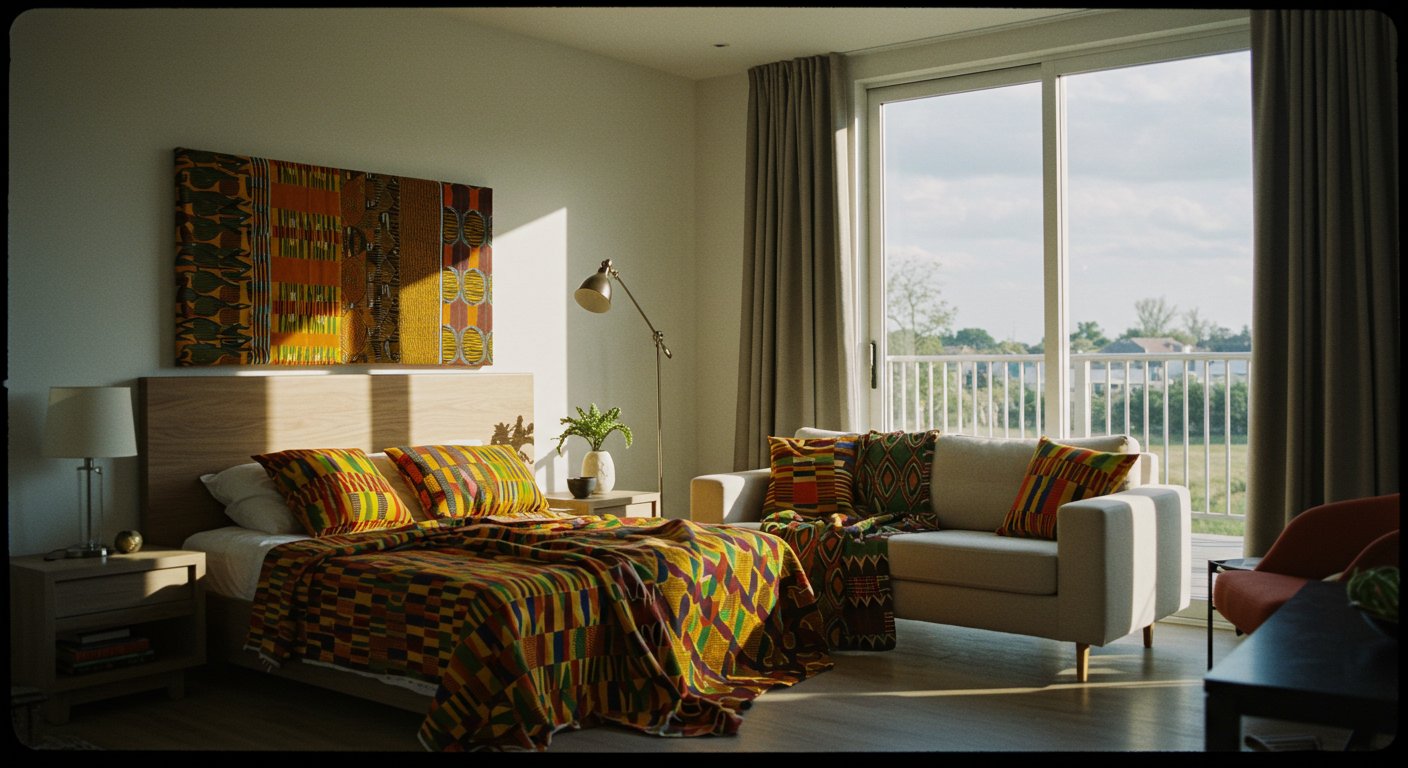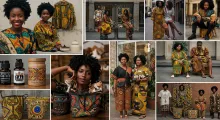African textiles such as Kente from Ghana, Adire from Nigeria, and Mudcloth (Bògòlanfini) from Mali are not just fabrics—they are powerful cultural symbols, rich in history, craftsmanship, and identity. Integrating them into modern homes doesn’t just offer a bold visual statement, it also honors tradition and celebrates African creativity. This article explores how these textiles can be harmoniously infused into contemporary home decor.
Understanding the Textiles
- Kente is a woven cloth from Ghana, traditionally worn by royalty. It's colorful, symbolic, and patterned with intricate designs representing proverbs and moral values.
- Adire is a resist-dyed fabric from the Yoruba people of Nigeria. It uses indigo dye and features patterns created by folding, tying, or stitching the cloth before dyeing.
- Mudcloth is made from handwoven cotton dyed with fermented mud in Mali. Each symbol and layout has a specific meaning, often telling a story.
Applications in Modern Homes
- Upholstery: Use Kente or Mudcloth for chairs, ottomans, and benches. Their bold patterns create an instant focal point.
- Throw Pillows & Bedding: Adire throw pillows or bed runners add subtle heritage to bedrooms without overwhelming the space.
- Wall Art: Frame large panels of these fabrics as standalone art pieces or in collage.
- Curtains & Drapes: Long Adire or Mudcloth drapes can define a room with both cultural and aesthetic gravity.
Balancing Traditional with Contemporary
- Pair African textiles with neutral colors like whites, grays, or earthy tones to avoid visual clutter.
- Mix with minimalistic or Scandinavian furniture to allow the patterns to pop.
- Blend with natural materials like wood, rattan, or jute for a grounded, organic vibe.
Maintenance Tips
- Most African fabrics are handmade and may require gentle hand-washing.
- Avoid prolonged exposure to sunlight to prevent color fading.
- Rotate decorative pieces occasionally to maintain their longevity.
Conclusion Designing with African textiles isn’t about following a trend—it’s about storytelling, memory preservation, and embracing the soul of African culture within personal spaces.



